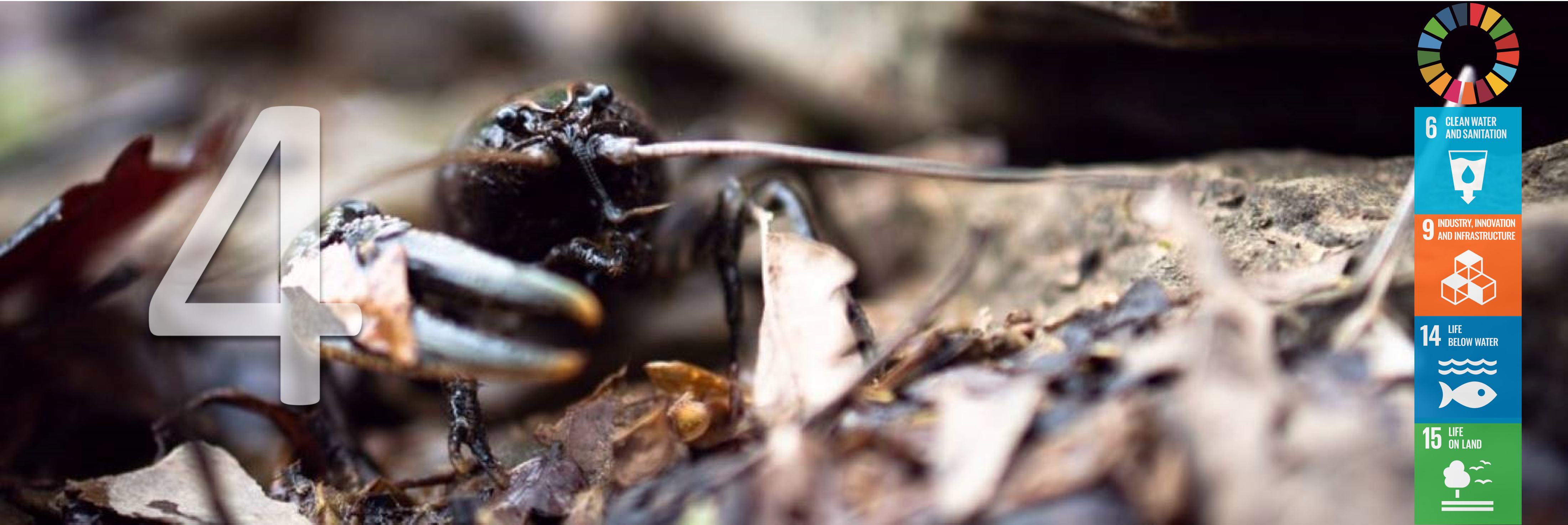Freshwater ecosystems in the era of global change
Head of the research program: Assoc. Prof. Dipl.-Ing. Miloš Buřič, Ph.D.
The research team of the RP 4 consists of selected employees of four scientific laboratories of the FFPW USB, specifically the Laboratory od Freshwater Ecosystems, the Laboratory of Machine Vision in Aquaculture and Water Protection, the Laboratory of Aquatic Toxicology and Ichtyopathology, and the Laboratory of Environmental Chemistry and Biochemistry.
Introduction
Freshwater ecosystems occupy less than 1% of the Earth's surface, but support approximately one tenth of the world's species and one third of all vertebrates. These systems provide a wide range of valuable services to human populations, but increased demand on freshwater resources has led to freshwater crisis in both human and biodiversity perspectives. Freshwater taxa are at greater risk of extinction than those living in other ecosystems. Considering freshwater ecosystems and their functioning, there is a range of significant drivers behind ongoing changes. Besides overexploitation and habitat loss/degradation, climate change together with biological invasions are indicated among the most important drivers of global change. Understanding and predicting these changes is not only of scientific priority, but also of societal significance.
Vision
A vision of the research programme is to apply a multidisciplinary approach to the issue which is based both on previous scientific and research directions applied at the Center workplaces and integration of new approaches enabling acquisition of a significantly broader spectrum of information with a high information value. Specifically, combining existing ecological, ethological, physiological, ichtyopathological and ecotoxicological approaches, their improvement by means of so far routinely non-applied approaches and development of new methods.
Objective of the RP
The objective is to understand recently occurring and predicted processes taking place in freshwater ecosystems (changes in species composition of freshwater biota, climatic and anthropogenic effects, growing importance of biological invasions) and assessment of their whole-society importance. Next, it is the development and application of biomonitoring methods observing the water quality using physiological, ethological and ecological reactions of organisms, e.g. for the drinking water supply or aquaculture purposes. The key point is obtaining essential information for freshwater management with the emphasis put on biological invasions and changes in the environment. The ambition is to predict the ecological impacts of biological invasions, to understand the impacts of climate and anthropogenic biological changes on functioning of ecosystems as well as finding specific markers for qPCR reflecting physiological status of organisms of interest. Developing contactless systems for monitoring of physiological reactions of organisms on external stimuli and their applications (safety of strategic water resources). Creation of a mathematical model on behaviour of fish and crayfish allowing prediction of behaviour under specific conditions.
Results
The team of researchers gradually extends a range of research methods and model organisms involved. Thanks to this, the quantity and quality of publications in this period were increasing. The results of the team are related to the physiology of organisms of interest, their basic biology, behavioral processes of each species and their interactions, as well as more complex ecological relations between predators and prey, or the position of key stone species in food chains. We found that invasive species of crayfish and other organisms are able to adapt to adverse environmental conditions such as droughts, extreme temperatures, which is crucial in view of recent major changes in the aquatic environment such as climate change (temperature, extreme droughts) and anthropogenic environmental damage (physical, chemical). These features are often coupled with high reproductive potential and differing pathways of spread. Achieved results create space for further applications of biomonitoring systems using fish, crayfish and other organisms such as biosensors. For early detection of contamination or disease, we use motion detection, behavioral and cardiac activity analysis. Some of the systems are already commercially exploited and we plan their extension among users in water supply, food and aquaculture industries.




